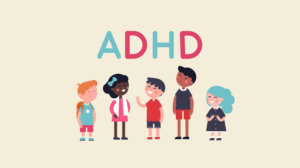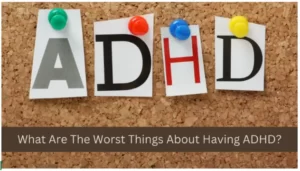
How Understanding ADHD Subtypes Leads to Better Treatment?
Attention deficit hyperactivity disorder (ADHD) is a common neurodevelopmental condition affecting millions of children and adults worldwide. Characterized by inattention, hyperactivity, and impulsivity, ADHD can significantly impact daily life, causing difficulties with focus, organization, and emotional regulation.
However, the traditional view of ADHD as a monolithic disorder is evolving. Recent research suggests that ADHD can manifest in distinct subtypes, each with its unique presentation of symptoms. Recognizing these subtypes is crucial for developing personalized treatment plans and improving overall outcomes for individuals with ADHD.
The Three Subtypes of ADHD: Unraveling the Spectrum
The Diagnostic and Statistical Manual of Mental Disorders, Fifth Edition (DSM-5), currently recognizes three main subtypes of ADHD:
- Predominantly Inattentive Presentation (PI): Individuals with this subtype primarily struggle with maintaining focus, following directions, and staying organized. They may appear withdrawn or daydreamy, often missing details or making careless mistakes. Hyperactivity and impulsivity may be less prominent, leading to underdiagnosis, particularly in girls and adults.
- Predominantly Hyperactive-Impulsive Presentation (PH): This subtype is characterized by excessive motor activity, restlessness, and difficulty staying still. Individuals may blurt out answers before questions are finished, struggle with taking turns, and exhibit fidgeting or other signs of physical restlessness. Inattention may be present but is overshadowed by the hyperactive-impulsive symptoms.
- Combined Presentation (C): This subtype encompasses symptoms from both the inattentive and hyperactive-impulsive presentations. Individuals experience difficulties with focus, organization, and hyperactivity/impulsivity.
Understanding these subtypes goes beyond simply categorizing symptoms. Each subtype has distinct underlying cognitive processes and neural correlates.
For example, research suggests that the PI subtype may be associated with deficits in working memory. In contrast, the PH subtype may involve difficulties with dopamine regulation in the brain, impacting impulse control.
Why Subtype Differentiation Matters: A Personalized Approach
Traditionally, ADHD treatment has relied on a one-size-fits-all approach, primarily utilizing stimulant medications. While stimulants can be very effective, they may not be equally beneficial for all subtypes.
For instance, individuals with the PI subtype may benefit more from cognitive-behavioral therapy (CBT) to improve focus and organization, while those with the PH subtype might require a combination of medication and behavioral interventions to manage hyperactivity and impulsivity.
Here’s a breakdown of how understanding subtypes can lead to better treatment approaches:
- Tailored Medication Management: Stimulant medications can be highly effective for managing hyperactivity and impulsivity, but their impact on inattention can vary. For the PI subtype, non-stimulant medications like atomoxetine might be a more suitable option. Furthermore, dosage adjustments may be necessary based on the specific subtype and its predominant symptoms.
- Targeted Behavioral Interventions: CBT techniques can be particularly helpful for individuals with the PI subtype to improve focus, organization, and time management skills. Conversely, for the PH subtype, behavioral interventions might focus on impulse control strategies and managing physical restlessness.
- Improved Treatment Outcomes: By addressing the core symptoms of each subtype, treatment plans become more effective. Individuals are more likely to experience significant improvements in focus, behavior, and overall well-being.
- Reduced Risk of Comorbidity: ADHD often co-occurs with other mental health conditions like anxiety and depression. Recognizing and treating the specific ADHD subtype can help prevent or mitigate the development of these comorbidities.
Beyond Diagnosis: The Road Ahead in Subtype Research
While the identification of ADHD subtypes is a major advancement, there’s still much to explore. Here are some key areas of ongoing research:
- Refining Subtype Criteria: Current diagnostic criteria may not fully capture the nuances of each subtype. Research is ongoing to identify more specific markers and symptom profiles for improved diagnosis.
- Biological Underpinnings: Further investigation into the neurological differences between subtypes can pave the way for the development of subtype-specific medications and therapies.
- Long-Term Impact: Understanding how each subtype affects an individual’s life trajectory can inform interventions and support systems throughout childhood, adolescence, and adulthood.
- Comorbidity and Subtypes: Research is needed to explore the specific ways in which ADHD subtypes interact with other mental health conditions to develop more targeted treatment approaches.
The Future of ADHD Treatment: A Spectrum of Possibilities
By digging deeper into these areas, researchers hope to refine subtype criteria, unlock the secrets of the brain’s role in different subtypes, and map the long-term impact of ADHD subtypes on individuals’ lives. This knowledge will pave the way for the development of:
- Personalized Treatment Plans: Tailored medication regimens, targeted behavioral interventions, and specialized support systems based on individual subtype presentations.
- Subtype-Specific Therapies: The development of medications and therapies specifically designed to address the core symptoms of each subtype.
- Improved Prognosis: With earlier diagnosis, more effective treatments, and targeted support systems, individuals with ADHD will be empowered to reach their full potential.
The future of ADHD treatment is bright. By embracing the spectrum of ADHD subtypes and fostering ongoing research, we can move towards a future where individuals with ADHD can thrive, not just survive.
Final Thoughts
The recognition of ADHD subtypes represents a significant shift in our understanding of this complex disorder. By moving away from a one-size-fits-all approach, we can create more effective and personalized treatment plans. This not only improves outcomes for individuals with ADHD but also empowers them to take control of their condition and thrive in all aspects of life.
If you suspect you or someone you know may have ADHD, it’s crucial to seek a qualified mental health professional for a proper evaluation. Early diagnosis and appropriate treatment based on subtypes can significantly improve quality of life.
There are many resources available to support individuals with ADHD, including support groups, educational materials, and online communities. With knowledge, advocacy, and access to effective treatment, ADHD can be managed effectively, allowing individuals to achieve their goals and live fulfilling lives.


